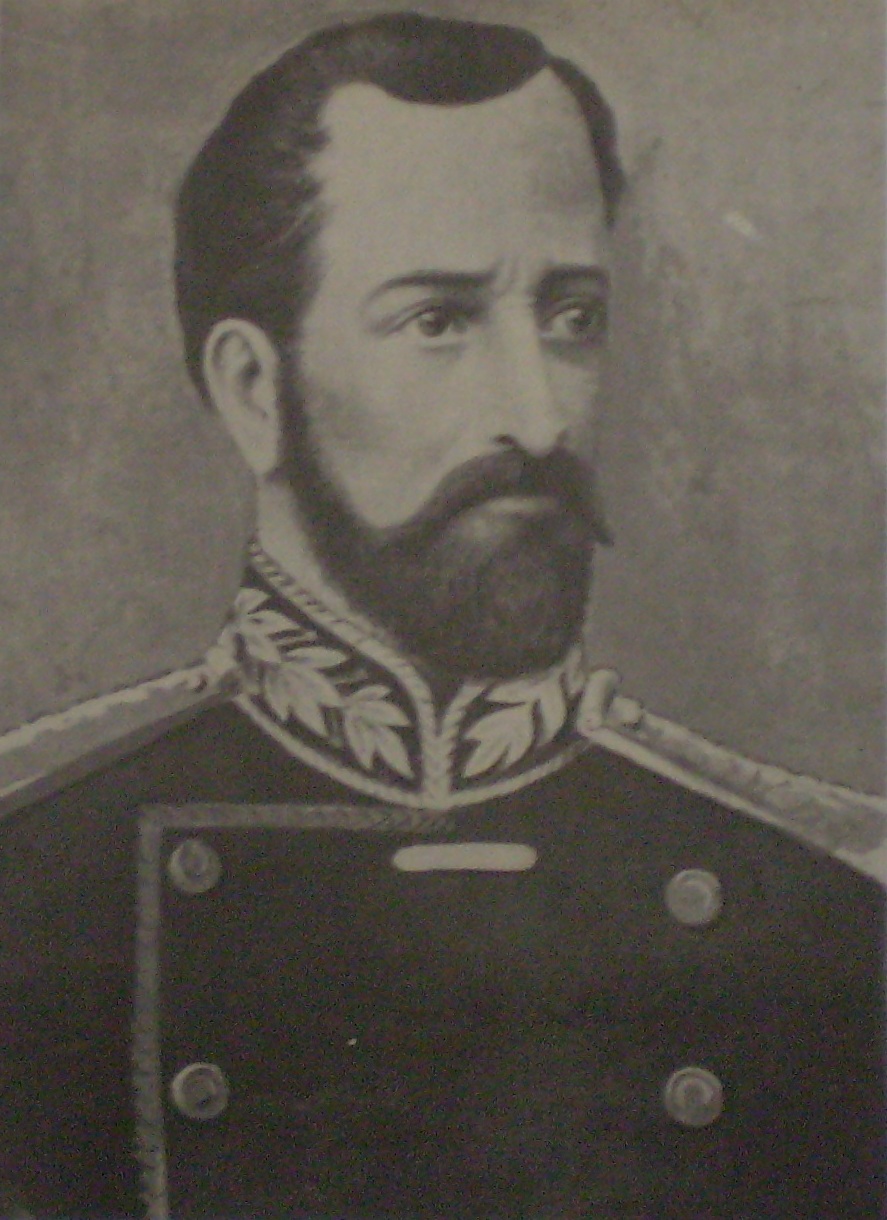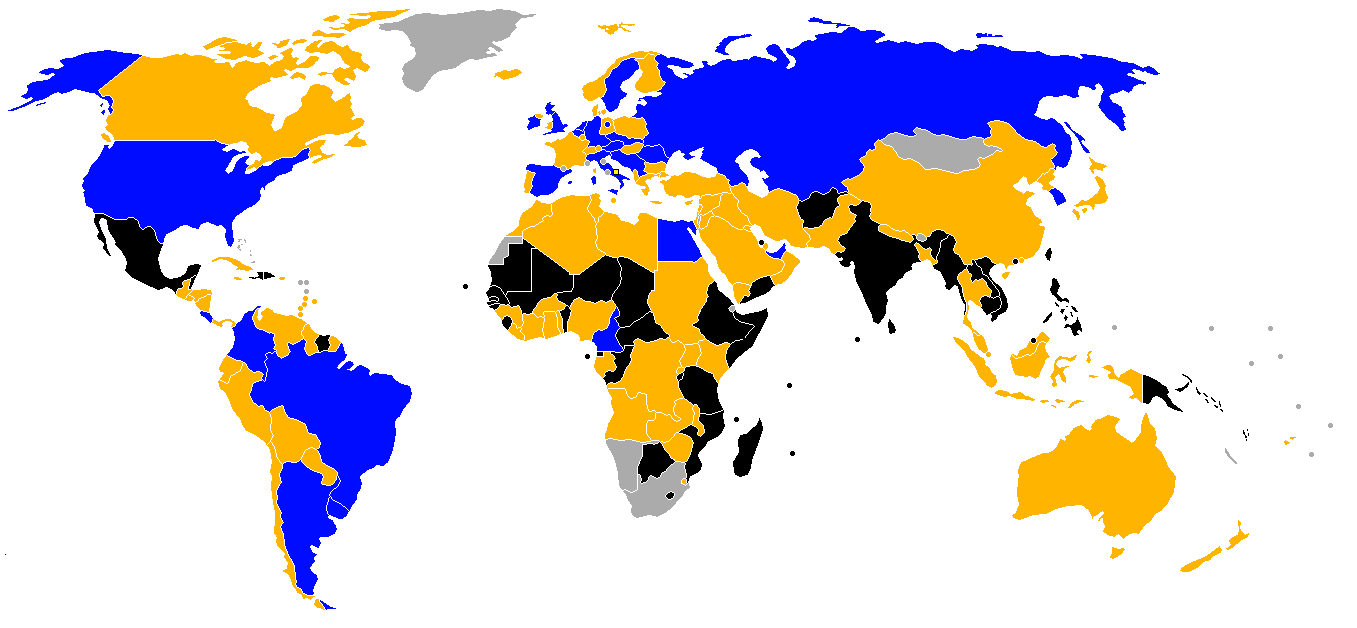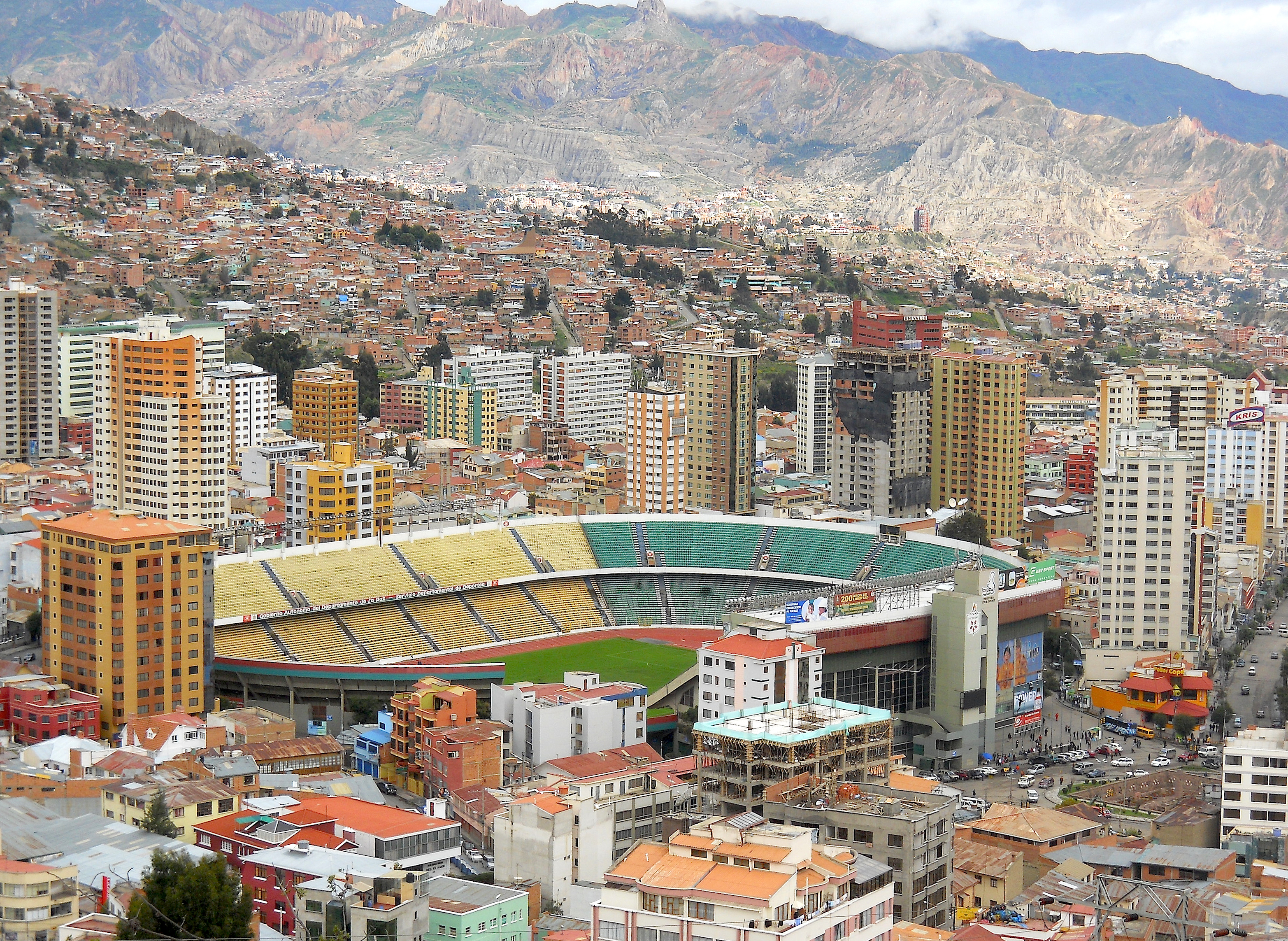|
José Milton Melgar
José Milton Melgar Soruco (born September 20, 1959) is a retired Bolivian football midfielder. In 2006, he was appointed by the Bolivian Government under President Evo Morales as Minister of Sports, but he resigned a year later. He currently runs his own youth football academy in his hometown. Playing career Club At the club level, Melgar played for Blooming, Bolívar, Oriente Petrolero and Real Santa Cruz in Bolivia, as well as Everton (VdM) and Cobreloa in Chile. He also played in Argentina for the two giants and fierce rivals Boca Juniors and River Plate. In addition, during his career, he also had 53 Copa Libertadores appearances with 2 goals scored. International Melgar was capped 89 times and scored 6 international goals for Bolivia between 1980 and 1997. His tally of 89 caps was a national record until January 31, 2002, when it was broken by Marco Sandy who obtained his 90th cap in a friendly match against Brazil. Melgar played all three matches at the 1994 FIFA Wo ... [...More Info...] [...Related Items...] OR: [Wikipedia] [Google] [Baidu] |
Santa Cruz De La Sierra
Santa Cruz de la Sierra (; ), commonly known as Santa Cruz, is the largest city in Bolivia and the capital of the Santa Cruz Department (Bolivia), Santa Cruz department. Situated on the Pirai River (Bolivia), Pirai River in the eastern Tropical Lowlands of Bolivia, the Santa Cruz de la Sierra Metropolitan Region is the most populous urban agglomeration in Bolivia with an estimated population of 2.4 million in 2020. It is formed out of a conurbation of seven Santa Cruz municipalities: Santa Cruz de la Sierra, La Guardia, Bolivia, La Guardia, Warnes, Bolivia, Warnes, Cotoca, El Torno, Santa Cruz, El Torno, Porongo, and Montero, Bolivia, Montero. The city was first founded in 1561 by Spanish explorer Ñuflo de Chavez about east of its current location, and was moved several times until it was finally established on the Piray River, Pirai River in the late 16th century. For much of its history, Santa Cruz was mostly a small outpost town, and even after Bolivia gained its independenc ... [...More Info...] [...Related Items...] OR: [Wikipedia] [Google] [Baidu] |
Copa Libertadores
The CONMEBOL Libertadores, also known as Copa Libertadores de América (), is an annual continental club football competition organized by CONMEBOL since 1960. It is the highest level of competition in South American club football. The tournament is named after the '' Libertadores'' (Spanish and Portuguese for ''liberators''), the leaders of the Spanish American wars of independence and Brazilian Independence, so a literal translation of its former name into English is "''Liberators of America Cup''". The competition has had several formats over its lifetime. Initially, only the champions of the South American leagues participated. In 1966, the runners-up of the South American leagues began to join. In 1998, Mexican teams were invited to compete and contested regularly from 2000 until 2016. In 2000 the tournament was expanded from 20 to 32 teams. Today at least four clubs per country compete in the tournament, with Argentina and Brazil having the most representatives (six and ... [...More Info...] [...Related Items...] OR: [Wikipedia] [Google] [Baidu] |
Friendly Match
An exhibition game (also known as a friendly, scrimmage, demonstration, training match, pre-season game, warmup match, or preparation match, depending at least in part on the sport) is a sport, sporting event whose prize money and impact on the player's or the team's rankings is either zero or otherwise greatly reduced. Exhibition games often serve as "warm-up matches", particularly in many team sports where these games help coaches and managers select and condition players, before the competitive matches of a Season (sports), league season or tournament. If the players usually play in different teams in other leagues, exhibition games offer an opportunity for the players to learn to work with each other. The games can be held between separate teams or between parts of the same team. An exhibition game may also be used to settle a challenge, to provide professional entertainment, to promote the sport, to commemorate an anniversary or a famous player, or to raise money for Chari ... [...More Info...] [...Related Items...] OR: [Wikipedia] [Google] [Baidu] |
Cochabamba, Bolivia
Cochabamba (; ) is a city and municipality in central Bolivia in a valley in the Andes mountain range. It is the capital of the Cochabamba Department and the fourth largest city in Bolivia, with a population of 630,587 according to the 2012 Bolivian census. Its name is from a compound of the Quechua words ''qucha'' "lake" and ''pampa'', "open plain." Residents of the city and the surrounding areas are commonly referred to as ''cochalas'' or, more formally, ''cochabambinos''. It is known as the "City of Eternal Spring" or "The Garden City" because of its spring-like temperatures all year round. It is also known as "La Llajta," which means "town" in Quechua. It is the largest urban center between the higher capital of La Paz and Santa Cruz de la Sierra in the tropical plains of the east. It sits south-west of the Tunari mountains, and north of the foothills of the Valle Alto. In antiquity, the area featured numerous lakes, which gave the city its name. Many of these lakes have ... [...More Info...] [...Related Items...] OR: [Wikipedia] [Google] [Baidu] |
Estadio Félix Capriles
The Estadio Sudamericano Félix Capriles is a multi-purpose stadium in Cochabamba, Bolivia. It is currently used mostly for football (soccer), football matches, and has a maximum capacity of 35,000. It is the home stadium of Club Jorge Wilstermann and Club Aurora. It is also used for bigger concerts, political rallies, and other public events held in the city of Cochabamba. History The stadium was opened in 1938. On 31 March 1963, Bolivia defeated Brazil 5–4 to win their first Copa America title at this stadium. The stadium was used during the 1997 Copa América. In 2017, it underwent a renovation to prepare for the 2018 South American Games. References [...More Info...] [...Related Items...] OR: [Wikipedia] [Google] [Baidu] |
1994 FIFA World Cup Qualification
The 1994 FIFA World Cup qualification was a series of tournaments organised by the six FIFA confederations. The 1994 FIFA World Cup featured 24 teams with one place reserved for the host nation, United States, and one place for the defending champions, Germany. The remaining 22 places were determined by a qualification process, in which 147 teams, from the six FIFA confederations, competed. Most of the successful teams were determined within these confederations, with a limited number of inter-confederation play-offs occurring at the end of the process. Fifteen teams withdrew: Liechtenstein, Cuba, Gambia, Burkina Faso Burkina Faso is a landlocked country in West Africa, bordered by Mali to the northwest, Niger to the northeast, Benin to the southeast, Togo and Ghana to the south, and Ivory Coast to the southwest. It covers an area of 274,223 km2 (105,87 ..., Liberia national football team, Liberia, Malawi national football team, Malawi, Mali national football team, Mali, ... [...More Info...] [...Related Items...] OR: [Wikipedia] [Google] [Baidu] |
1990 FIFA World Cup Qualification
The FIFA World Cup qualification, qualification competition for the 1990 FIFA World Cup was a series of tournaments organised by the six FIFA FIFA#Structure, confederations. Each confederation — the Asian Football Confederation (AFC), Confederation of African Football (CAF), CONCACAF (North America), CONMEBOL (South America), Oceania Football Confederation (OFC), and UEFA (Europe) — was allocated a certain number of the 24 places at the tournament. A total of 116 teams entered the competition, with Italy national football team, Italy, as the host, and Argentina national football team, Argentina, as the holders, qualifying for the final tournament automatically. The first qualification match was played on 17 April 1988 and qualification concluded on 19 November 1989. A total of 735 goals were scored in the 314 qualifying matches (an average of 2.34 per match). Entrants At the close of entries on 30 September 1987, a total of 116 football associations had entered the 1990 World ... [...More Info...] [...Related Items...] OR: [Wikipedia] [Google] [Baidu] |
La Paz, Bolivia
La Paz, officially Nuestra Señora de La Paz ( Aymara: Chuqi Yapu ), is the seat of government of the Plurinational State of Bolivia. With 755,732 residents as of 2024, La Paz is the third-most populous city in Bolivia. Its metropolitan area, which is formed by La Paz, El Alto, Achocalla, Viacha, and Mecapaca makes up the second most populous urban area in Bolivia, with a population of 2.2 million, after Santa Cruz de la Sierra with a population of 2.3 million. It is also the capital of the La Paz Department. The city, in west-central Bolivia southeast of Lake Titicaca, is set in a canyon created by the Choqueyapu River. It is in a bowl-like depression, part of the Amazon basin, surrounded by the high mountains of the Altiplano. Overlooking the city is the triple-peaked Illimani. Its peaks are always snow-covered and can be seen from many parts of the city. At an elevation of roughly above sea level, La Paz is the highest capital city in the world. Due to ... [...More Info...] [...Related Items...] OR: [Wikipedia] [Google] [Baidu] |
Estadio Hernando Siles
Estadio Hernando Siles (), also known as Estadio Olímpico La Paz, is a multi-purpose stadium in La Paz, Bolivia. It is the country's largest stadium, with a capacity of 41,143 seats. It is named after Hernando Siles Reyes, the 31st President of Bolivia (1926–1930). Its biggest attendance was in 1989 during the match between The Strongest and Destroyers, with 52,494 fans in attendance. The stadium is located in the Miraflores borough of La Paz, at an altitude of 3,637 metres (11,932 feet) above sea level, making it one of the highest professional stadiums in the world. Opened in 1930, it is the home ground of three major Bolivian league football clubs; Club Bolívar, The Strongest and La Paz F.C., as well as several smaller top sides: Universitario de La Paz, Chaco Petrolero and Mariscal Braun. The stadium also hosts lower league clubs: Fraternidad Tigres and Academia de Balompié Boliviano. History The stadium was officially opened on 16 January 1930 with a match ... [...More Info...] [...Related Items...] OR: [Wikipedia] [Google] [Baidu] |
1983 Copa América
The 1983 Copa América football tournament was played between 10 August and 4 November, with all ten CONMEBOL members participating. Defending champions Paraguay received a bye into the semi-finals. The cup was won by Uruguay, that beat Brazil in the final match. This achievement ended Uruguay's 16-year streak without an official championship since the 1967 South American Championship, and qualified the ''Celestes'' to play the first Artemio Franchi Trophy in 1985 against France, winner of the UEFA Euro 1984. Squads Group stage The teams were drawn into three groups, consisting of three teams each. Each team played twice (home and away) against the other teams in their group, with two points for a win, one point for a draw, and zero points for a loss. The winner of each group advanced to the semi-finals. Paraguay qualified automatically as holders for the semifinal. Group A ---- ---- ---- ---- ---- Group B ---- ---- ---- ---- ---- Group C --- ... [...More Info...] [...Related Items...] OR: [Wikipedia] [Google] [Baidu] |
Estadio El Campín
The Estadio Nemesio Camacho El Campín, commonly known as El Campín, is the main stadium of Bogotá, Colombia. It was inaugurated on 10 August 1938 and has a capacity of 39,512 spectators. It is the home ground of the Categoría Primera A teams Millonarios and Santa Fe. The stadium is named after Nemesio Camacho, former manager of the then-existing streetcar system of Bogotá and also the father of Luis Camacho Matiz, the person who offered the land where the stadium would be constructed. The name Campín comes from a modification of the word "camping" because the area where the stadium currently stands was formerly a camping zone. It entered service as a football stadium around 1946, just in time to host the first national club tournament. It was used as the venue for the 2001 Copa América final, where the Colombian team were crowned champions of the American continent, defeating Mexico 1–0. This stadium was one of the eight stadiums of the 2011 FIFA U-20 World Cup held ... [...More Info...] [...Related Items...] OR: [Wikipedia] [Google] [Baidu] |







